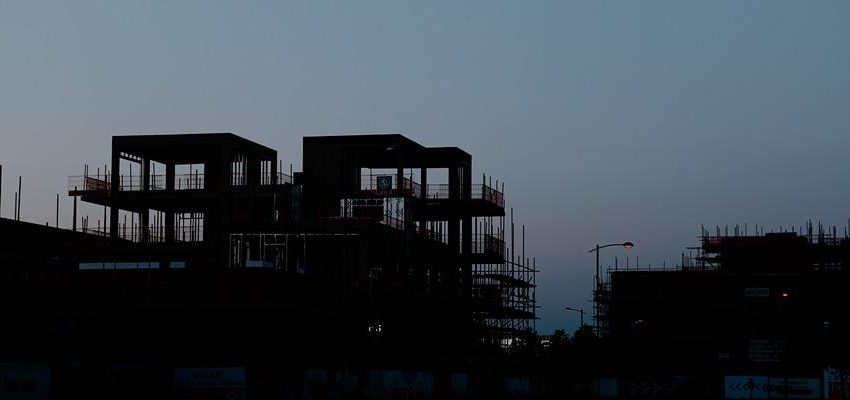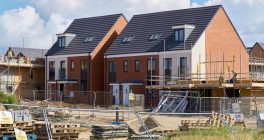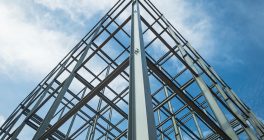The UK construction sector gained momentum during May, growing at its fastest pace for two years, the latest survey of industry purchasing managers indicates.
Rising construction workloads prompted renewed expansions in purchasing activity and employment in May, while business confidence has also strengthened, it appears.
Supply chain conditionsa have also continued to improve amid reports of good stock availability at vendors.
The headline S&P Global UK Construction Purchasing Managers’ Index (PMI) for May 2024 rose to 54.7, up from 53.0 in April and above the 50.0 no-change mark for the third consecutive month. It was the highest reading for two years.
For the first time since May 2022, all three monitored categories saw activity increase during the month as even housing activity returned to growth, albeit only marginally.
The sharpest increase in activity was seen in the commercial category where the rate of growth accelerated to a two-year high. Meanwhile, civil engineering activity rose at a solid, but slightly softer pace.
According to respondents, the latest increase in total construction activity reflected sustained growth of new orders. New business rose for the fourth consecutive month as demand conditions improved. In particular, firms linked higher new orders to previously delayed projects now moving forward.
With new order growth sustained midway through the second quarter, construction firms increased employment for the first time in five months. Although only modest, the pace of job creation was the sharpest since last September, the survey found.
A renewed increase in purchasing activity was also registered in May, again linked to improving workloads. The rise in input buying ended an eight-month sequence of decline.
Vendor’s stock holdings appear healthy and lead times shortened to the greatest extent in seven months.
With supply-chain conditions improving, companies noted only a marginal increase in input costs during May, with the rate of inflation the softest in the current five-month sequence of rising input prices.
Construction firms also signalled an improvement in the availability of subcontractors in May, despite the largest expansion in their usage since April 2022. The rates charged by subcontractors increased solidly, although at a pace that was weaker than the series average.
Further increases in new orders, in some cases linked to planned marketing campaigns, are set to support continued growth of construction activity over the next 12 months, the survey found.
Questioned before the general election was called, companies also hoped for an improvement in economic conditions and reduction in interest rates. Business confidence increased to a three-month high in May.
Andrew Harker, economics director at S&P Global Market Intelligence, which compiles the monthly survey, said: “The UK construction sector looks to be building good momentum as we approach the middle of 2024, highlighted by activity increasing at the fastest pace in two years during May. Particularly pleasing was the broad-based nature of the rise in activity as work on housing projects increased for the first time in more than a year-and-a-half.
“Firms are gearing up for further growth in the months ahead, posting renewed expansions in both employment and purchasing activity as workloads increase.
“Moreover, the supply-chain environment continued to improve in May. Companies were able to secure inputs much more quickly than in April and at prices that were only slightly higher than in the previous month on average. These factors should help constructors in their efforts to ramp up operations in line with greater new order inflows.”
Aecom’s head of cost management, Brian Smith, commented: “With the UK economy back in the black, a full quarter of growth has put the construction sector on a more stable footing heading into the key summer months.
“There is further room for optimism as well. An early General Election reduces the risk of market inertia and will almost certainly embolden decision-making in the second half of the year. With the rate of inflation reducing back to normal levels, the prospect of falling interest rates should also breathe much-needed wind into the sails of housebuilders.
“That said, contractors will be hopeful of more concrete commitments to infrastructure investment within party manifestos before planning too far beyond the end of 2024.”
Atul Kariya, head of construction and real estate at accountancy network MHA, said: “The rise in construction PMI data to 54.7, the fastest in two years, is very positive news for the sector. After months in the doldrums, there are definitely green shoots visible, which should continue throughout the summer months, as it typically does as construction output increases.
“The significant increase in the commercial category shows that the industry is now on a firmer footing than it has been for a considerable time, particularly given the slightly more positive economic indicators and the potential for a cut in interest rates later in the summer. Our clients are telling us that things are slowly, steadily and cautiously starting to fall into place after a period of uncertainty, which will enable them to start making longer-term decisions.”
Haman Manak, procurement director at drywall & facade subcontractor Stanmore, was less impressed. He said: “For people not in the sector, these PMI statistics might suggest construction has begun to recover. Unfortunately, however, they only tell half of the story – and if the sector is to truly stabilise, the government must intervene.
“The current state of the construction industry is far from ideal. Insolvencies across the sector are still worryingly high, and housebuilding will only continue to buckle under unsustainable targets with planning constraints in place. Interest rates have suppressed our growth.
“It’s vital the government gets construction back on track. The sector is a solid contributor to our GDP and critical to the deluge of current government policies and debates. If they don’t – and continue to prioritise PR-driven tech strategies, for example – more firms will go into the red, and construction will only continue to struggle to deliver higher volume and better quality homes.
“The government needs to give us a helping hand. We need incentives to embrace tech and modernise our sites, retain our workforce, and, after that, have enough margin to turn our full attention to net zero. We can’t just sit there and wait for rates cuts; whether through subsidies, more state-funded projects, or even a relaxing of planning rules, the government needs to cushion the sector – and allow firms to take on more projects and safeguard their balance sheets.”





